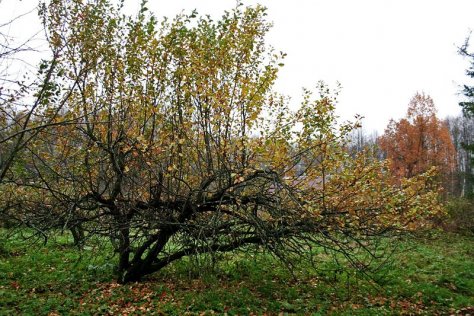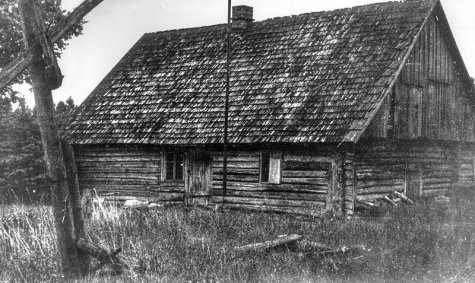Alam-Pedja lood
Alam-Pedja story: October morning in Rehessaare
Text and photo: Pille Tammur
Translation: Liis
The weather forecast promises snow. Catching the first snow between the forests is an enchanting enterprise in itself. At sunrise in the morning I set course on a well-known path in the Alam - Pedja nature reserve, towards Rehesaare. There is an autumn stillness. I listen carefully if at least someone makes any sound. Only an offended raven croaks once when I happen to pass under the tree where it is dozing on a branch. A couple of busy marsh tits and that is the whole of my catch. I stop and listen – only the susurrus of the wind in the bog pine crowns and the quiet crackling of the rain on my rain hood. The weather is crisp but I will not get any snow to-day, that is clear – there is no smell of snow in the air, nor the icy breath that precedes a snowfall. Only a quiet rain.
Rehesaare receives me with autumn seriousness, with its big ancient spruces and almost prehistoric apple trees – marks of an old forest farm site. Despite the fact that the old house is not there any more the place has stirred into new life, but that is already another story. My first visit to Rehesaare was different.
It was autumn, September 1982. We had already been walking the forest paths for several hours and I couldn’t tire of marvelling. We pressed through swamp forest, reached an open bilberry forest with high pines where also the thing grew that I had come looking for this time – a pink bilberry. Then some more watery forest and suddenly we were on a high narrow ridge in the middle of an open bog. Where on earth had I arrived? My companion Einar only made a sly-indifferent face. A couple of hours more of walking, then more swamp and more thicket. In a few forest openings the life and doings of long gone humans could be imagined. How was it at all possible to live in such a wilderness. We hiked the whole day through an incredibly varied landscape.
The Hovel, or the Rehessaare farmhouse, by now demolished, in 1982. Photo: Einar Tammur.
By evening we reached a forest farmhouse the name of which Einar knew to be Rehessaare. We had found the land of wonders where all Estonia’s eagles, grouse, wolves and bears lived. And if this were not enough. Here were the undulating beds of the Pedja and Umbusi rivers, enormous open spaces on the shores of the Emajõgi, the secret bends of the old rivers, water meadows, valley flats, proud oak stands on the shores of the Pedja and Pede rivers.
On that autumn day I did not yet know that Rehessaare would become our ”forest home”, lovingly called the Hovel, and that the Hovel would raise a whole group of outstanding biologists: Einar Tammur, Urmas Sellis, Arne Ader, Asko Lõhmus come first to mind. That this high ridge had the name Suur Peenar, Great Garden Bed, that the name of the amazing forest was Võiviku, that each bog island and open field had a name and that we lost ourselves hopelessly to this wild and untouched land. None of us knew that the idea of a new and unique conservation area had begun to germinate. But certainly the chain of events that more than 10 years later brought to the creation of the Alam - Pedja Nature Reserve was initiated and opened.










